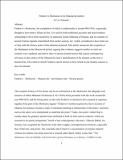Files in this item
Firdawsi’s Shahnama in its Ghaznavid context
Item metadata
| dc.contributor.author | Peacock, A. C. S. | |
| dc.date.accessioned | 2019-07-28T23:41:25Z | |
| dc.date.available | 2019-07-28T23:41:25Z | |
| dc.date.issued | 2018 | |
| dc.identifier | 251479487 | |
| dc.identifier | 28d08a47-06c0-4f3e-90a6-3cf7517f93c0 | |
| dc.identifier | 85051975284 | |
| dc.identifier | 000432416300002 | |
| dc.identifier.citation | Peacock , A C S 2018 , ' Firdawsi’s Shahnama in its Ghaznavid context ' , Iran: Journal of British Institute of Persian Studies , vol. 56 , no. 1 , pp. 2-12 . https://doi.org/10.1080/05786967.2018.1426195 | en |
| dc.identifier.issn | 0578-6967 | |
| dc.identifier.uri | https://hdl.handle.net/10023/18185 | |
| dc.description.abstract | Firdawsi’s Shahnama, the completion of which is traditionally to around 400/1010, is generally thought to have been a failure at first. It is said by both traditional accounts and much modern scholarship to have been rejected by its dedicatee Sultan Mahmud of Ghazna, and its contents of ancient Iranian legends, transmitted from earlier sources, are widely considered to have been out of step with the literary tastes of the Ghaznavid period. This article reassesses the reception of the Shahnama in the Ghaznavid period, arguing that evidence suggests neither its style nor contents were outdated, and that its tales of ancient Iranian heroes had a great contemporary relevance in the context of the Ghaznavid court’s identification of the dynasty as the heir to ancient Iran. The extent to which Firdawsi can be shown to have relied on pre-Islamic sources is also reevaluated | |
| dc.format.extent | 11 | |
| dc.format.extent | 706044 | |
| dc.language.iso | eng | |
| dc.relation.ispartof | Iran: Journal of British Institute of Persian Studies | en |
| dc.subject | Firdawsi | en |
| dc.subject | Shahnama | en |
| dc.subject | Ghaznavids | en |
| dc.subject | Pre-Islamic Iran | en |
| dc.subject | Persian poetry | en |
| dc.subject | D051 Ancient History | en |
| dc.subject | T-NDAS | en |
| dc.subject | BDC | en |
| dc.subject | R2C | en |
| dc.subject.lcc | D051 | en |
| dc.title | Firdawsi’s Shahnama in its Ghaznavid context | en |
| dc.type | Journal article | en |
| dc.contributor.institution | University of St Andrews. School of History | en |
| dc.contributor.institution | University of St Andrews. St Andrews Institute of Medieval Studies | en |
| dc.identifier.doi | 10.1080/05786967.2018.1426195 | |
| dc.description.status | Peer reviewed | en |
| dc.date.embargoedUntil | 2019-07-29 |
This item appears in the following Collection(s)
Items in the St Andrews Research Repository are protected by copyright, with all rights reserved, unless otherwise indicated.

